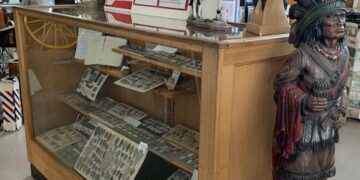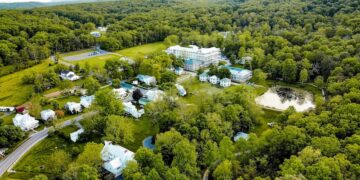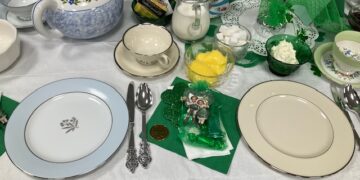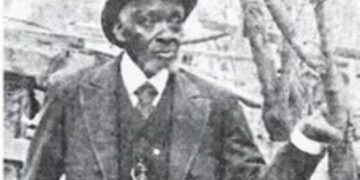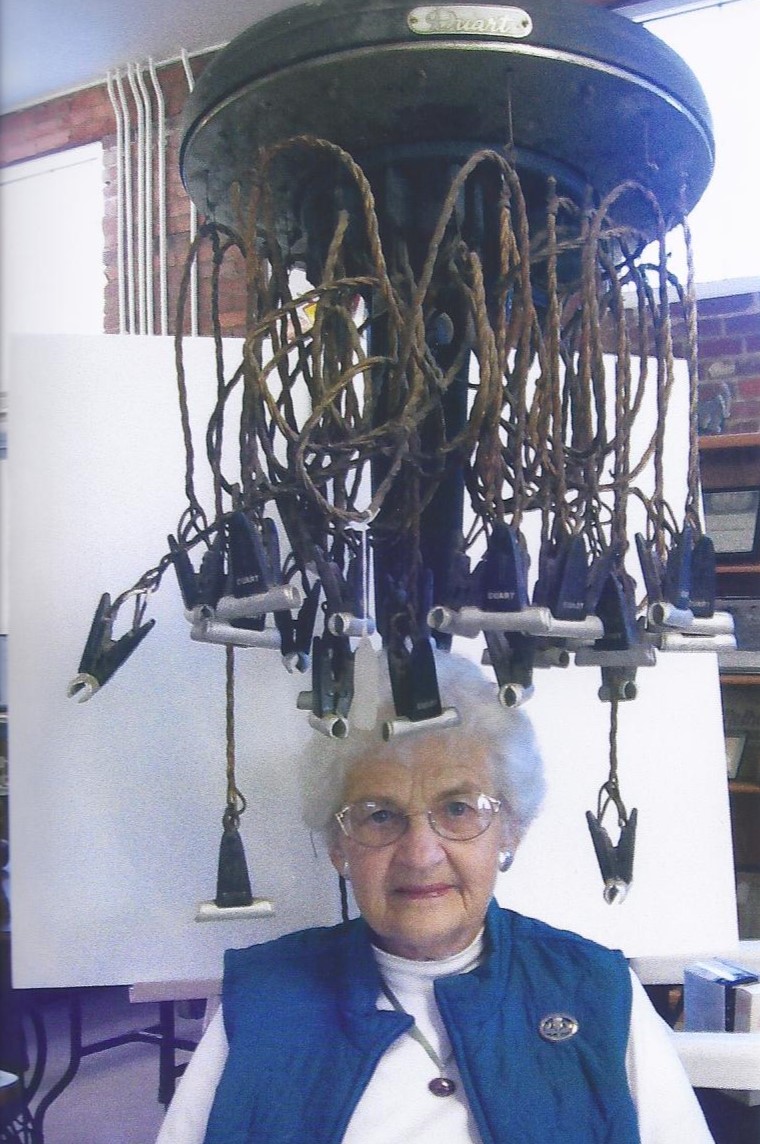AN INTRIGUING ARTIFACT FROM
HISTORIC BROADWAY EXHIBIT
One of the most intriguing artifacts at Plains District Museum is this 1930’s Permanent Wave Machine. Dwen Brown of Branner’s Beauty Shop in Broadway donated the machine to the Museum in 1998. According to Dwen, the shop opened in 1932 as part of Lawrence Branner’s Barbershop on Main Street. Dwen began working there in 1945 along with Marcella Lokey Branner, the original beautician. She indicated that the only permanent waves done in the shop in the early 1940’s were those done by the “machine wave.”
While the machine was used primarily in the 1920’s through the 40’s, its forerunners came from Europe in the late 19th and early 20th centuries. Historically, women had created curls by wrapping their hair around iron rods heated in the fire or wrapping their wet locks in rag stripes. In 1906 attempting to shorten this tedious lengthy procedure, Karl (Charles) Nessler, a German hairstylist, developed the first permanent wave machine. It was designed for long hair which was spiraled from the roots (root-winding) around rods to produce long curls. One source stated that he applied a curling solution to the hair made by combining cow urine and water. It also said that his early experiments on his wife’s hair resulted in completely burning it off and seriously burning her scalp. Eventually, he successfully improved the machine for widespread use.
By the 1920’s, shorter hair dominated the fashion world. The trend inspired other inventors including Eugene Suter, a Swiss immigrant, Isidor Calveto, a Spanish immigrant, and Josef Mayer, a Czech hairdresser to try to improve the perm machine for shorter styles. By 1924, Mayer had developed a curler with a clamp which enabled the stylist to wrap freshly washed and cut sections of hair around a smaller rod beginning at the ends (point-winding), apply alkaline additive, and then clamp on the small individual heaters suspended from above.
The hair was heated to about 200 degrees Fahrenheit and allowed to steam until dry. Later models featured larger clamps which when properly heated absorbed more heat and allowed the machine to be turned off once the curlers were in place. By the 1940’s home permanent kits using chemicals became popular, making the permanent wave machines obsolete.
The 1930 ’s Permanent Wave Machine on display at the Museum was manufactured by the DUART Manufacturing Co. Ltd. of San Francisco. It required 115 watts AC /DC and 15 amps of current. The attached timer could be set for up to 25 minutes.
Visitors to the Museum have expressed mixed reviews of their experiences with the perm machine. Many have mistakenly associated it with electric shock or torture treatments. My late mother, Kathryn Wampler of Mayland, said she found the perms less painful and more satisfactory than the later home perms using stronger chemicals. She did admit, however, that she had suffered occasional burns to the scalp and ears. Others have recalled terrible experiences in which the stylist left the clamps on too long and burned their hair off. Lena Turner, of Fulks Run, recalled her first perm in Harrisonburg when she was about 10 years old. She was so excited about the prospect of having curls that she was not the least intimidated by the machine and loved the results even though her ear was burned so bad that it blistered!
The current exhibit “Welcome to Historic Broadway” will be on display through June and with end with a virtual tour of Main Street Broadway on Sun. July 2 at 2 pm. Plains District Museum, open Thursday through Sunday, 1 -4 pm. Free admission.
Attached picture: a picture of Lena Turner of Fulks Run demonstrating the 1930’s Permanent Wave Machine on display at Plains District Museum in 2012.
Picture 2 Lena Turner of Fulks Run seated under the same kind of perm machine that was used in Harrisonburg for her first perm about 1940.
PLAINS DISTRICT MEMORIAL MUSEUM
PO Box 601
176 N. Main St., Timberville VA 22853
540-896-7900
Email: plainsmuseum@comcast.net
Website: plainsmuseum.com














